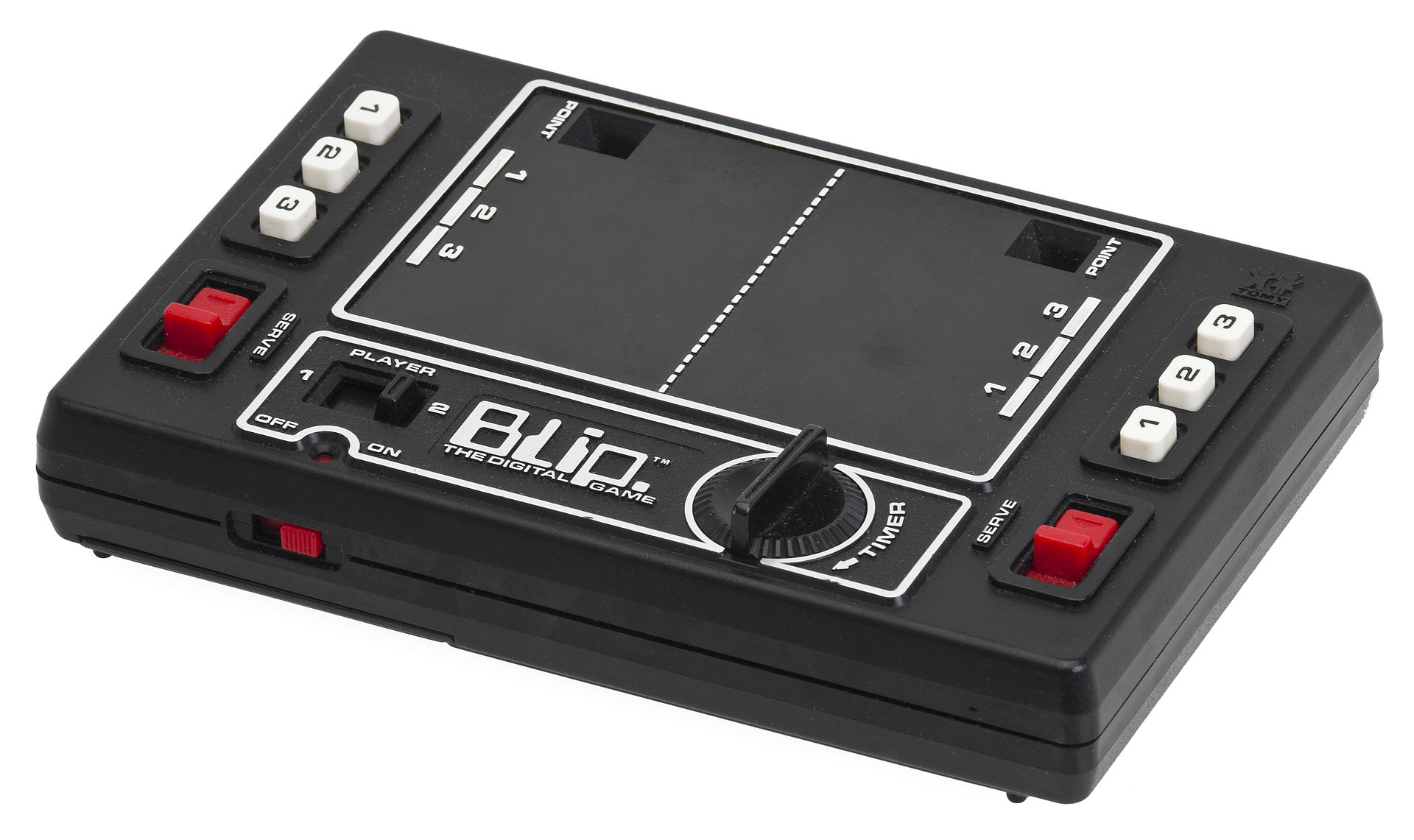-
1977
Hardware Description
Blip (stylized as Blip. THE DIGITAL GAME) is a tabletop electro-mechanical game marketed by Tomy starting in 1977 in the USA. The system can only play one two-player game that is very similar to Atari's video game Pong. In Germany, the system was sold under the name Blip-o-Mat. In Japan, the game was marketed as World Tennis.
Blip was designed by Hikoo Usami for the Tomy Kogyo Co., the patent being filed in 1976 and awarded on December 19, 1977. The game was housed in a plastic case with a translucent screen. On the screen was a hash line dividing the screen in half (and simulating a net) and contained the three positions for the ball to land for both sides. The upper portion of the case also contained the 1, 2, and 3 position buttons, the serve buttons, the player selector, and the timer dial. The underside contained the wheels to turn the score counters and the battery compartment.
It was the timer which provided the motor function to the game. Upon the timer dial being turned, this wound a spring which then, via several gears, drove the arm upon which the LED light (the ball) was mounted.
Movement of the LED was ostensibly random but a player was capable of memorizing the movements of the LED and recognize patterns which would enable the player to better anticipate where the "ball" would land.
Power for the LED was provided by two AA batteries. However, because the game was mechanical, in the right light conditions, it was possible to play Blip without batteries as one could see the unlit LED under the screen.
Tomy marketed Blip in the U.S. starting in 1977. In Japan, Blip was marketed as World Tennis and differed from the U.S. game by having the words "World Tennis" emblazoned on the screen and replacing the 1, 2, and 3 on the screen with silhouettes of tennis players. The Blip name remained on the Japanese version. In France, the game was marketed by Meccatronic. The German version was called Blip-o-Matic, although the Blip name remained on the case.
-
Manufacturer:
-
Hardware Type:
Video Game -
Manufacture Year:
1977 -
More Info:
-
We recognize our sponsors starting at $1 per entry.
Learn more at https://www.ithistory.org/benefits

